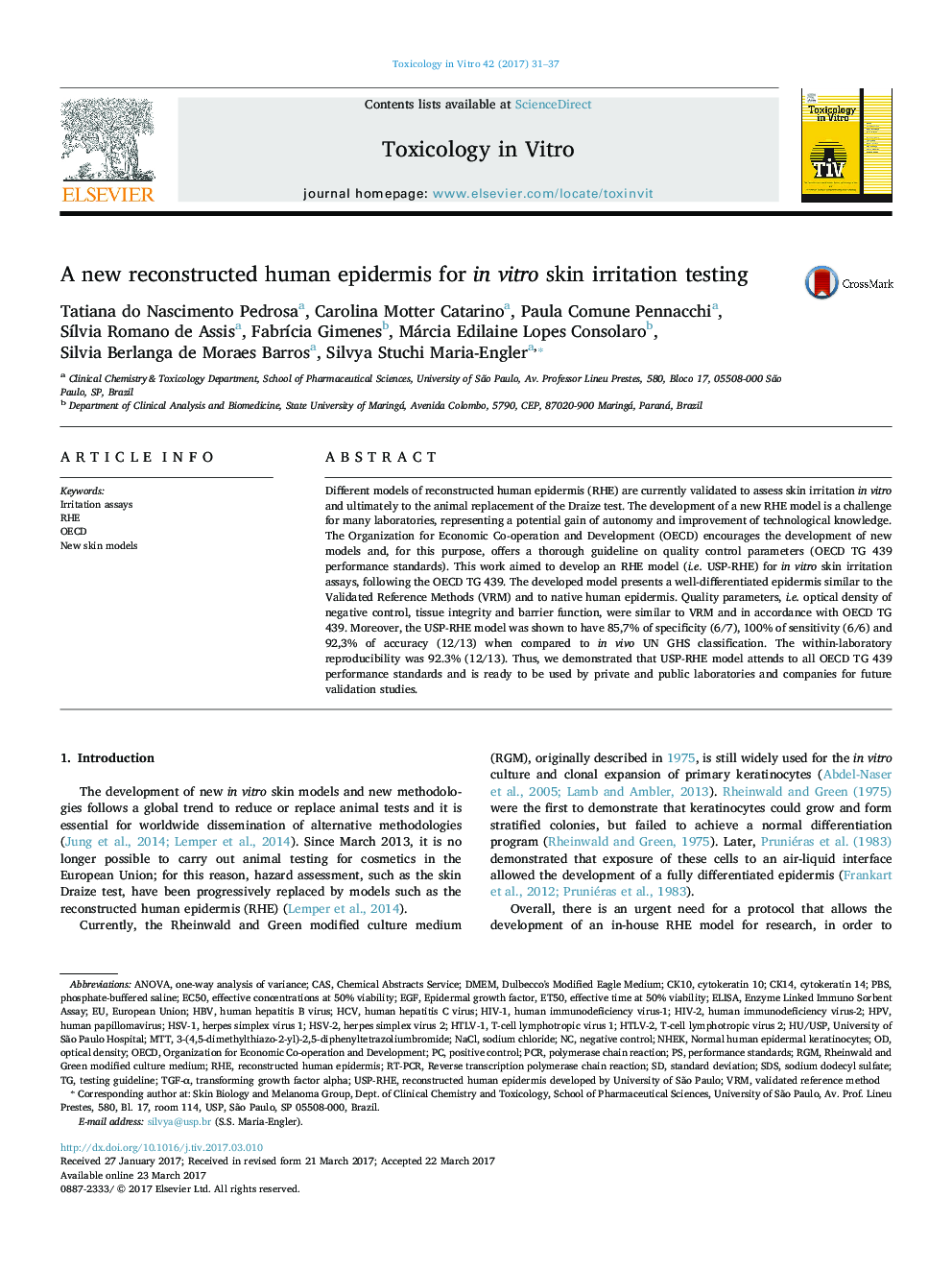| Article ID | Journal | Published Year | Pages | File Type |
|---|---|---|---|---|
| 5562652 | Toxicology in Vitro | 2017 | 7 Pages |
â¢A new RHE model, USP-RHE, is presented here as open source protocol.â¢The quality control parameters of USP-RHE were similar to VRM.â¢The model presented 85,7% of specificity, 100% of sensitivity and 92,3% of accuracy.
Different models of reconstructed human epidermis (RHE) are currently validated to assess skin irritation in vitro and ultimately to the animal replacement of the Draize test. The development of a new RHE model is a challenge for many laboratories, representing a potential gain of autonomy and improvement of technological knowledge. The Organization for Economic Co-operation and Development (OECD) encourages the development of new models and, for this purpose, offers a thorough guideline on quality control parameters (OECD TG 439 performance standards). This work aimed to develop an RHE model (i.e. USP-RHE) for in vitro skin irritation assays, following the OECD TG 439. The developed model presents a well-differentiated epidermis similar to the Validated Reference Methods (VRM) and to native human epidermis. Quality parameters, i.e. optical density of negative control, tissue integrity and barrier function, were similar to VRM and in accordance with OECD TG 439. Moreover, the USP-RHE model was shown to have 85,7% of specificity (6/7), 100% of sensitivity (6/6) and 92,3% of accuracy (12/13) when compared to in vivo UN GHS classification. The within-laboratory reproducibility was 92.3% (12/13). Thus, we demonstrated that USP-RHE model attends to all OECD TG 439 performance standards and is ready to be used by private and public laboratories and companies for future validation studies.
